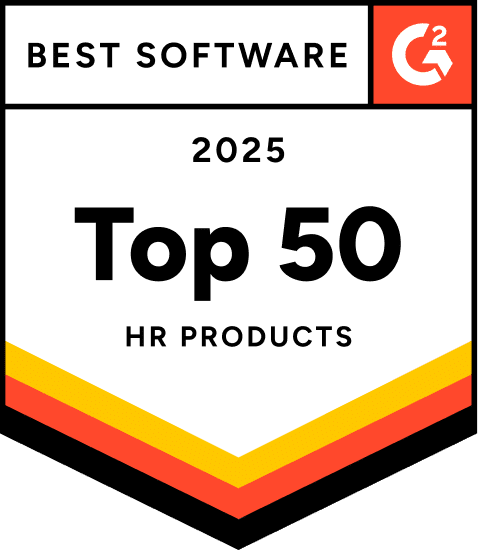Home » Industry News 2 » Applicant Tracking Systems Gain Traction Among Small Firms Seeking Efficiency
Wednesday, August 27th, 2025
In a cramped back office of a family-owned bakery, the owner sifts through a pile of resumes, each one a hopeful plea for a job. The phone buzzes with inquiries, emails pile up, and the pressure to find the right hire feels like a second full-time job. For small businesses, hiring has always been a grind equal parts art, science, and chaos. But a quiet revolution is underway. Applicant Tracking Systems (ATS), once the domain of corporate giants, are now leveling the playing field, helping small firms hire smarter, faster, and cheaper.
Why Small Businesses Are Turning to ATS
Small businesses face a brutal reality: they need top talent to compete but lack the HR muscle of larger firms. With limited budgets and lean teams, sifting through applications manually is a time-suck that most can’t afford. Enter ATS platforms software designed to collect, store, and sort candidate resumes with ruthless efficiency. These tools automate the tedious parts of hiring, from screening resumes to scheduling interviews, freeing up owners to focus on running their businesses.
The numbers tell the story. According to a report from IMARC Group, the global ATS market was valued at USD 2.90 billion in 2024 and is projected to hit USD 6.31 billion by 2033, growing at a compound annual growth rate (CAGR) of 8.08%. North America leads the pack, holding a 37.1% market share in 2024, driven by the region’s push for automation and digital transformation. For small firms, the appeal is clear: ATS solutions cut costs, streamline workflows, and help navigate the maze of employment laws.
A Game-Changer for the Little Guy
Unlike the clunky, expensive systems of the past, today’s ATS platforms are built for accessibility. Cloud-based solutions, often with free or freemium tiers, have democratized access to tools once reserved for enterprises. A local retail chain, for instance, slashed its hiring turnaround time by 40% after adopting an ATS to manage job postings and applicant communications. Another example: a tech startup used a free ATS to source remote developers, filling roles in weeks rather than months. These systems integrate seamlessly with job boards, social media, and even mobile apps, making it easier to reach candidates where they already are.
AI is the secret sauce. Modern ATS platforms use artificial intelligence to screen resumes, rank candidates, and even predict job fit based on skills and experience. This isn’t just about saving time it’s about making better hires. As Market Research Future notes, the ATS market, valued at USD 2.3 billion in 2021, is expected to reach USD 3.8 billion by 2030, with a CAGR of 6.54%. The rise of data analytics in recruitment is a key driver, enabling small firms to make decisions rooted in hard data rather than gut instinct.
The Challenges of Going Digital
Still, it’s not all smooth sailing. For every success story, there’s a small business owner staring at a new ATS dashboard, wondering where to start. Many lack the tech savvy to dive into software implementation, and budget constraints make even affordable platforms feel like a gamble. Free versions often come with strings attached limited features that push users toward paid upgrades. Compliance is another hurdle. Regulations like GDPR in Europe or Equal Employment Opportunity (EEO) laws in the U.S. demand meticulous data handling, and a misstep can lead to costly penalties.
Then there’s the human factor. Some owners resist change, clinging to paper resumes or gut-based hiring. “I’ve always hired by feel,” one café owner admitted, skeptical of algorithms picking her baristas. Yet, as hiring volumes swell The Insight Partners predicts the ATS market will hit USD 6.2 billion by 2031, with a CAGR of 10% manual methods are buckling under the strain. Small businesses ignoring ATS risk falling behind.
Real Impact, Real Results
The payoff, though, can be transformative. ATS platforms don’t just save time; they reshape the hiring process. By automating repetitive tasks, they cut time-to-hire, letting businesses snap up talent before competitors. Analytics tools provide insights into candidate pipelines, helping owners spot bottlenecks or biases. For candidates, a streamlined application process think mobile-friendly portals and automated updates creates a polished, professional impression that boosts a company’s employer brand.
Take a boutique marketing agency that struggled to hire graphic designers. After adopting an ATS, they integrated it with LinkedIn and niche job boards, doubling their applicant pool. The system’s candidate scoring feature helped them prioritize talent, and they filled the role in half the usual time. As Grand View Research reports, the ATS market, worth USD 2.14 billion in 2021, is set to reach USD 3.71 billion by 2030, with North America commanding over 40% of the revenue share. The on-premises segment, popular among cautious small firms, held a 60% share in 2021, though cloud-based options are gaining ground.
Looking Ahead: The Future of SMB Hiring
Industry experts see ATS becoming a staple for small businesses.“Recruitment tech isn’t just for the big players anymore,” says a veteran HR consultant. “It’s leveling the playing field, letting small firms punch above their weight.” Predictions suggest that within three to five years, ATS will be as standard for small businesses as accounting software is today. The fastest growth is expected in Asia Pacific, where a Mordor Intelligence report forecasts the market to grow from USD 2.47 billion in 2025 to USD 3.84 billion by 2030, at a CAGR of 7.44%.
For small firms eyeing an ATS, the advice is simple: prioritize ease of use, scalability, and integration. Platforms like Workday, iCIMS, or Bullhorn, noted in a Future Market Insights report, dominate the market, with software accounting for 64% of the ATS segment in 2025. Look for tools that sync with existing systems, offer robust analytics, and comply with local regulations. Pairing ATS with recruitment marketing think targeted job ads or social media campaigns can amplify results, turning a small firm into a talent magnet.
A New Era for Small Business Hiring
The hiring landscape is shifting, and small businesses are at a crossroads. Those who embrace ATS are finding they can compete with the big dogs, snagging top talent without breaking the bank. The technology isn’t a magic bullet it demands investment, learning, and adaptation but the rewards are undeniable: faster hires, better decisions, and a sharper edge in a cutthroat market. As the ATS market surges toward a projected USD 6.2 billion by 2031, small firms that act now will be the ones ready for tomorrow’s talent wars. In a world where every hire counts, that’s a bet worth making.
Frequently Asked Questions
What is an Applicant Tracking System and why are small businesses adopting them?
An Applicant Tracking System (ATS) is software that automates the hiring process by collecting, storing, and sorting candidate resumes with advanced screening capabilities. Small businesses are increasingly adopting ATS platforms because they help streamline workflows, cut hiring costs, and free up valuable time that owners can focus on running their core business operations. Modern cloud-based ATS solutions often offer free or freemium tiers, making them accessible to companies with limited budgets.
How much can small businesses save with ATS software in 2025?
Small businesses can significantly reduce their time-to-hire by up to 40% when implementing ATS solutions, as demonstrated by companies featured in recent case studies. The global ATS market, valued at $2.90 billion in 2024 and projected to reach $6.31 billion by 2033, offers cost-effective solutions that help small firms compete with larger companies for top talent. These systems eliminate manual resume screening and automate interview scheduling, translating to substantial time and labor cost savings.
What are the main challenges small businesses face when implementing ATS?
The primary challenges include lack of technical expertise for software implementation, budget constraints even with affordable platforms, and compliance with regulations like GDPR or Equal Employment Opportunity laws. Many small business owners also resist change, preferring traditional hiring methods based on “gut feeling” rather than data-driven approaches. However, as hiring volumes increase and manual methods become unsustainable, businesses that don’t adopt ATS risk falling behind competitors in securing quality candidates.
Disclaimer: The above helpful resources content contains personal opinions and experiences. The information provided is for general knowledge and does not constitute professional advice.
You may also be interested in: Top HR Blogs and Podcasts for 2025 – AvaHR
Struggling with slow hiring? Open roles drain time, overwork teams, and stall growth. AvaHR transforms recruitment: post to 100+ job boards in one click, track candidates with live dashboards, and collaborate seamlessly via email or SMS. Trusted by hundreds with a 4.9★ rating. Don’t let delays hold you back your next great hire is waiting! Start your free trial today no credit card needed or get a personalized demo to see AvaHR in action.
Powered by flareAI.co





